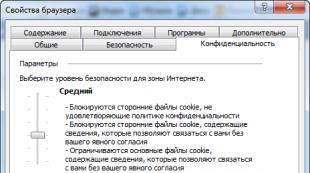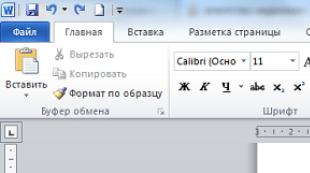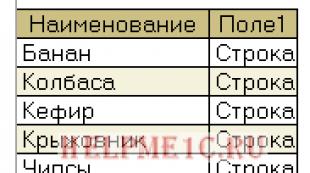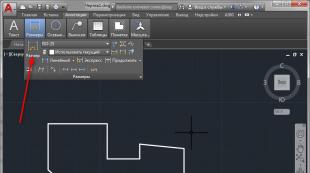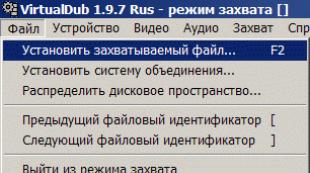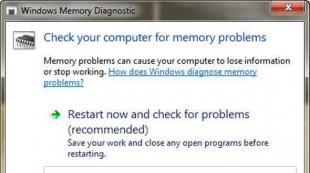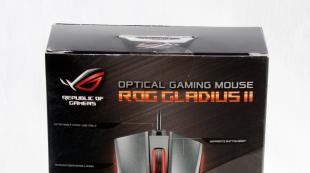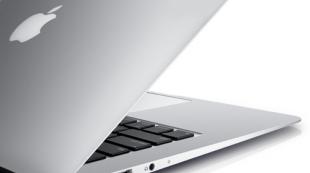MSI P35 Neo и MSI P35 Neo Combo — системные платы на базе чипсета Intel P35. MSI P35 Neo3 - недорогое решение на базе Intel P35 Звуковая карта для p35 neo
Игра Doom 3 уравнивает обе платы. MSI P35 Neo3 выигрывает один кадр в низком разрешении, однако при частоте кадров 120 это несущественно. При повышении разрешения результаты нивелируются. Это показывает, что в реальных приложениях мы не увидим разницу между сравниваемыми платами по причине того, что они выполнены на одной системной логике. Но всё же стоит сказать спасибо инженерам MSI, которые смогли «выжать» из своего детища немного больше, чем конкуренты. Возможно, это достигается благодаря уменьшенным задержкам работы контролера памяти, а возможно, разница объясняется в разных вторичных таймингах памяти, которые платы устанавливают сами.
Вывод
Модель MSI P35 Neo3 можно назвать достойным представителем среднего ценового сегмента на рынке материнских плат. Высококачественное исполнение с использованием долговечных конденсаторов гарантирует стабильную работу этой модели в обычном системном блоке дома или в офисе. Также плата является неплохим вариантом для тех, кто нацелился на апгрейд и стоит перед выбором нового продукта, да при этом хочет подключить все оставшиеся устройства с интерфейсом PCI. При желании есть возможность установить и одну плату расширения с интерфейсом PCI-Express x1. Поддержка основных режимов RAID позволит создать простые массивы из жёстких дисков для увеличения производительности дисковой подсистемы. Отсутствие внешних цифровых аудиоинтерфейсов и FireWire 1394 у данной модели немного огорчает, однако вполне оправдывается ценой. По возможностям подключения периферийных устройств MSI P35 Neo3 действительно немного уступает некоторым другим представителям на базе Intel P35, но, как мы увидели, в производительности она даже немного обходит более дорогие модели конкурентов. Для простого пользователя эта плата, учитывая её изначальную производительность, станет хорошей покупкой.
Но для категории энтузиастов и оверклокеров MSI P35 Neo3 не может предложить чего-либо выдающегося. Нет охлаждения на силовых элементах системы питания процессора и 8-контактного разъёма дополнительного питания. Возможностей для разгона в BIOS немного, но все основные функции присутствуют. Небольшого радиатора на чипсете хватит лишь для охлаждения Р35 на штатных частотах. Поэтому увлекаться чрезмерным разгоном на данной плате не рекомендуется без дополнительного охлаждения компонентов, хотя потенциал у модели есть.
Материнская плата MSI P35 NEO- F
В настоящее время линейка материнских плат MSI на базе чипсета Intel P35 состоит из пяти плат, различающихся как по цене, так и по функциональности.
Платы серии NEO позиционируются как решения для экономных пользователей. Комплектация таких плат являет собой, как правило, образец разумного минимализма. Серии Platinum и Diamond предназначены для компьютерных энтузиастов. Для их изготовления используются высококачественные японские конденсаторы, для охлаждения греющихся элементов задействуются медные радиаторы и тепловые трубки.
Упаковка и комплектация
Плата MSI P35 NEO-F поставляется в коробке из глянцевого картона с изображением когтистой лапы неведомого монстра, продирающегося к плате стальными когтями сквозь преграду:
Открыв коробку, вы, кроме непосредственно платы, обнаружите минимальный набор дополнительных аксессуаров:
2 диска с софтом и драйверами под различные операционные системы:Windows XP и Windows Vista (информация на официальном сайте гласит, что ОС WinME/9x не поддерживаются платой);
руководство пользователя;
шлейф UDMA-66/100/133;
SATA-кабель;
шнур питания для SATA-устройств (переходник типа MOLEX-SATA);
задняя панель ввода-вывода (на рисунке не показана).
Это типичная комплектация для плат низшего ценового диапазона, а MSI могла бы добавить в комплект пару дополнительных брэкетов, тем более, что согласно мануалу это опционально возможно.
Возможности платы, дизайн и компоновка, BIOS, прилагаемый софт
Основные возможности платы описаны в таблице:
| Поддерживаемые процессоры | - Intel Core 2 Extreme, Core 2 Quad, Core 2 Duo, Pentium и Celeron (LGA775) |
| Поддерживаемая FSB | - 1333/ 1066/ 800 МГц |
| Чипсет | - Северный мост: Intel® P35 - Южный мост: Intel® ICH9 |
| Поддерживаемая память | - DDR2 667/800 SDRAM (240pin/ non-ECC) - 4 слота DDR2 DIMM (8 GB Max) |
| Сеть | - Гигабитная сеть (Realtek RTL8111B) |
| Аудио | - Realtek ALC888 - 7.1 -канальный аудиовыход - Совместимый с Azalia |
| IDE | - 1 IDE port, поддерживаемый Marvell 88SE6111 - Поддержка Ultra DMA 66/100/133, PIO и Bus Master режимы |
| SATA | - 4 SATA ports (SATA1~4) поддерживаются южным мостом ICH9 - SATA 5 поддерживается Marvell 8SE6111 - Пропускная способность до 300 MB/s |
| RAID | - SATA1~6 поддерживают RAID 0/ 1/ 0+1/ 5 |
| Floppy | - 1 floppy порт - Поддержка 1 FDD (360 KB, 720 KB, 1.2 MB, 1.44 MB и 2.88 MB) |
| Задняя панель | - 1 разъем PS/2 (мышь) - 1 разъем PS/2 (клавиатура) - 1 параллельный порт, поддерживающий SPP/EPP/ECP mode - 1 порт COM1 - 4 порта USB - 1 разъем LAN - 6 аудиовыходов |
| Распаянные на плате разъемы | - 4 USB 2.0 - 1 Front Panel Audio - 1 CD-In - 1 SPDIF-out |
| Слоты | - 1 PCI Express x 16 - 3 PCI Express x 1 - 2 PCI slots, 3.3V/ 5V PCI |
| Форм-фактор | ATX (30.5 cm X 22.0 cm) |
| Количество отверстий для монтажа | 6 |
Дизайн и компоновка
Разводку платы вы можете оценить, взглянув на следующую картинку:
Как правило, проектируя материнскую плату бюджетного уровня, инженерам не приходится ломать голову над проблемой размещения различных компонентов по причине их немногочисленности. Из основных недостатков разводки следует отметить слишком близкое расположение слота памяти, разъема питания и IDE-разъема: если на открытом стенде собрать систему особого труда не составит, то в большинстве корпусов это создаст некоторые проблемы.
Громоздкое охлаждение некоторых современных карт может блокировать пару первых разъемов для слотов памяти, и, кстати, эта проблема встречается сплошь и рядом в большинстве плат. Разъем FDD расположен в самом низу платы, но, учитывая повсеместное отмирание "флоппи-дисков", на это можно смело закрыть глаза.
Оценив разводку, самое время обратить внимание непосредственно на плату:
Любой искушенный пользователь по ярко-красному цвету текстолита сразу поймет, что перед ним находится плата MSI, причем бюджетная. Более дорогие продукты MSI предпочитает изготавливать на черном текстолите.
Северный мост, Intel P35, закрыт довольно большим пассивным радиатором, что, как было сказано во вводной части обзора, полностью соответствует рекомендациям производителя чипсета.
Модуль питания процессора собран по трехканальной схеме, чего вполне достаточно при условии использования процессоров нижнего и среднего уровней. А вот для разгона, тем более если вы захотите разогнать, например, топовый четырехъядерник, этого может просто быть недостаточно. Однако в этом трудно упрекнуть инженеров MSI: в пару к топовому процессору обычно приобретают и соответствующую материнскую плату, а для этого у MSI припасены платы серии Platinum или Diamond. На тестируемой плате можно встретить как классические конденсаторы от различных производителей (налицо следы экономии), так и современные полимерные электролиты:
На тестируемой плате реализована поддержка до 8 GB памяти типа DDR2-800, для этого распаяны 4 слота памяти, попарно смещенных друг относительно друга:
Плата оснащена тремя слотами PCI-E 1x, что, на наш взгляд, несколько избыточно: соответствующей периферии пока днем с огнем не найти, поэтому лучше бы инженеры MSI распаяли хотя бы еще один слот PCI. Судите сами, в компьютере любителя цифровых технологий часто можно встретить ТВ-тюнер или плату видеозахвата, качественную звуковую карту и все, если плата предоставляет только два слота PCI. Приходится идти на дополнительные траты, приобретая внешнюю звуковую карту или модем, а ведь на этом список распространенной периферии далеко не заканчивается.
Удобно расположен и джампер Clear CMOS (JBAT1) – вблизи двух нижних слотов PCI-E 1x, около батареи, так что даже в системном блоке будет достаточно просто сбросить настройки BIOS при неудачном оверклокинге.
Южный мост также закрыт пассивным радиатором, однако этого вполне достаточно: по данным цифрового термометра, во время тестирования температура радиатора не превышала 40? С. На плате использован южный мост ICH9, поэтому распаяно только 4+1 разъема SATA, поддержка пятого разъема SATA обеспечивает чип производства Marvell (Marvell 88SE6111):

Задняя панель ввода-вывода также не может похвастаться функциональным богатством:

Как видно из рисунка, на заднюю панель выведено только самое необходимое: разъемы PS/2 для мыши и клавиатуры, четыре разъема USB, Serial и Parallel порты да выходы и входы звуковой подсистемы. В руководстве пользователя упомянуто, что на задней панели опционально можно встретить VGA-разъем типа D-SUB. Возможно, в будущем MSI планирует снабдить бюджетную плату встроенным видеоядром. Впрочем, почему бы и нет? Естественно, в ней будет использован северный мост G33.
С обратной стороны плата не содержит каких-либо распаянных элементов, так что проблем с креплением некоторых back-plate возникнуть не должно.
Системный мониторинг осуществляется благодаря чипу Fintek F71882FG:

BIOS и возможности разгона
Компания MSI входит в немногочисленную группу производителей материнских плат, использующих AMI BIOS.
Наиболее интересен, конечно же, раздел Frequency/Voltage Control, где сосредоточены оверклокерские функции. Для неопытных пользователей предоставлена возможность автоматического разгона. Аналогичная возможность имеется и у платы других производителей, в частности, ASUS. В интерпретации MSI данная функция называется D.O.T., что расшифровывается, как Dynamic Overclocking Technology (технология динамического разгона). Названия могут быть различны, однако суть остается одной и той же: плата постепенно увеличивает частоту системной шины и останавливается на некой стабильной частоте, которую и предлагается использовать. Излишне говорить о том, что разгон процессора в ручном режиме принесет гораздо лучшие результаты. Пользователь может отключить данную функцию и выбрать один из следующих вариантов:

Все предельно просто: выбрав, например, вариант Commander, плата увеличит частоту системной шины на 15%, соответственно, разогнав процессор.
Более опытные пользователи могут самостоятельно изменять частоты шины, а также рабочее напряжение на процессоре, памяти и северном мосту.
К чести инженеров MSI они не стали урезать оверклокерские возможности платы, даже несмотря на ее явное позиционирование в бюджетный сегмент: максимальные значения напряжений весьма высоки, они, скорее всего, характерны для топовых оверклокерских решений, судите сами:



Так, вы можете увеличить напряжение на процессоре до 1.55В, что при наличии высокоэффективного кулера либо более серьезного охлаждения позволит с успехом разогнать большинство процессоров, поддерживаемых платой. Помехой может стать (и наверняка станет) лишь трехканальная подсистема питания, но это уже немного не по теме. Со значения по умолчанию для DDR2 напряжения в 1.8 В пользователь имеет возможность увеличить его аж до 3.3 В. Если учесть, что такое напряжение без признаков длительного разрушения могли вынести лишь легендарные чипы BH-5, которые, как известно, соответствуют стандарту DDR, а даже современные оверклокерские модули DDR2 рассчитаны на рабочее напряжение около 2.4 В (при дальнейшем увеличении напряжения память просто разрушится), то 3.3 В – это явно многовато. Разработчики платы могли бы, например, скрыть увеличение напряжения в диапазоне 2.4-3.3 В от большинства неумелых экспериментаторов, но этого не произошло.
Что касается напряжения на северном мосту, то можно его увеличить от 1.2 В до 1.6 В. Возможно, в этом случае пассивным охлаждением чипсета обойтись не удастся.
Для более тонкой настройки пользователю предоставляется возможность использовать различные делители FSB:DRAM.

Здесь нас ожидал неприятный сюрприз: плата выставляла значения на свое усмотрение, и порой, чтобы добиться функционирования памяти на частоте 800 МГц, приходилось выставлять значения наугад – при частоте системной шины 200 МГц делитель 1:2 давал абсолютно неверные результаты. Естественно, корректность работы памяти приходилось проверять несколькими информационно-тестовыми утилитами, например, Everest. Очевидно, что это досадная недоработка BIOS, которая должна быть исправлена в свежих версиях прошивки.
Раздел аппаратного мониторинга предоставляет возможности отслеживать следующие параметры:

Ничего особенного, все скромно, прямо как в платах GigaByte.
Прилагаемый софт
Что касается фирменного программного обеспечения, то MSI предложила утилиту Dual Core Center. Как следует из названия, утилита предоставляет доступ к мониторингу и настройкам как параметров системной платы, так и видеоадаптера. Но с небольшой оговоркой: видеокарта также должна быть произведена компанией MSI. Проверка показала, что частенько утилита выдает полную несуразицу, и полезность ее применения весьма сомнительна.
В отсутствие разгона, однако, таких багов не наблюдалось.
Другая, утилита Live Update, которая предназначена для безопасного обновления BIOS в среде Windows, упрямо твердила, что самый последний BIOS для данной платы уже поставлен, хотя на сайте уже появилось обновление:

Таким образом, поставляемые производителем утилиты оказались абсолютно бесполезной игрушкой, да и дизайнерскими изысками они также не блещут.
Опубликованной ещё на ПС, мы начали исследовать материнские платы нижнего ценового диапазона, которые не воспринимаются большинством пользователей как «оверклокерские» продукты. На фоне близкого по цене продукта под названием Biostar TP45 HP , материнская плата MSI P45 Neo-F имеет только одно существенное преимущество - широкая распространенность. При поиске следующего кандидата на обзор решено было найти плату, сочетающую в себе такую же распространенность как MSI P45 Neo-F, но не являющуюся ни прямым, ни косвенным конкурентом в ценовом плане для Biostar TP45 HP. После недолгих поисков такая плата нашлась – MSI P35 Neo.
ЗНАКОМСТВО С МАТЕРИНСКОЙ ПЛАТОЙ
Появившаяся на рынке более года назад, материнская плата MSI P35 Neo поставляется в небольшой по размеру коробке синего цвета.
реклама
На лицевой стороне приведена информация о совместимости с процессорами и поддерживаемой частоте системной шины. С обратной стороны представлена информация об основных технологиях и возможностях:
На боковой части находится наклейка с основными характеристиками:

Комплект поставки характерен для всех материнских плат фирмы MSI нижней ценовой категории, в него входит.
- Page 1 P35 Neo/ G33 Neo series MS-7360 (V1.X) Mainboard G52-73601X1...
Page 3: Safety Instructions
Safety Instructions Always read the safety instructions carefully. Keep this User’s Manual for future reference. Keep this equipment away from humidity. Lay this equipment on a reliable flat surface before setting it up. The openings on the enclosure are for air convection hence protects the equip- ment from overheating.Page 5: Weee (waste Electrical And Electronic Equipment) Statement
WEEE (Waste Electrical and Electronic Equipment) Statement...- Page 9 Clock ........................A-6 Voltage ......................... A-7 FAN Speed ......................A-8 Temperature ......................A-9 User Profile ......................A-10 Appendix B Realtek ALC888 Audio ..............B-1 Installing the Realtek Audio Driver ..............B-2 Software Configuration ..................B-4 Hardware Setup ....................B-19...
Page 11: Mainboard Specifications
Processor Support ® - Intel Core 2 Extreme, Core 2 Quad, Core 2 Duo, Pentium and Celeron in the LGA775 package (For the latest information about CPU, please visit http://www.msi. com.tw/cpusupport.htm) Supported FSB - 1333/ 1066/ 800 MHz Chipset ®...
Page 12
Getting Started Floppy - 1 floppy port - Supports 1 FDD with 360KB, 720KB, 1.2MB, 1.44MB and 2.88MB Connectors Back panel - 1 PS/2 mouse port - 1 PS/2 keyboard port - 1 Parallel port supporting SPP/EPP/ECP mode - 1 serial port (COM1) - 1 VGA port (for G33 Neo series only) - 1 IEEE1394 port (optional) - 4 USB 2.0 Ports...
Page 13: Mainboard Layout
M S-7360 M ainboard Mainboard Layout CPUFAN1 Top: mouse Bottom: keyboard JPW1 Top: Parallel Port Bottom: COM portA VGA port (optional) Top:1394 (optional) Bottom: USB ports Int el P35/ G33 Top: LAN Jack Bottom: USB ports Line-In Line-Out T:RS-Out M:CS- Ou t...Page 15: Chapter 2 Hardware Setup
Hardware Setup Chapter 2 Hardware Setup This chapter provides you with the information about hardware setup procedures. While doing the installation, be careful in holding the components and follow the installation procedures. For some components, if you install in the wrong orientation, the components will not work properly.Page 17: Cpu (central Processing Unit)
Celeron processor in LGA 775 package. When you are installing the CPU, make sure to install the cooler to prevent overheating. If you do not have the CPU cooler, consult your dealer before turning on the computer. For the latest information about CPU, please visit http://www.msi.com.tw/testreport.htm Important Overheating Overheating will seriously damage the CPU and system.- Page 19 Hardware Setup 5. Lift the load lever up and open the 6. After confirming the CPU direction load plate. for correct mating, put down the CPU in the socket housing frame. Be sure to grasp on the edge of the CPU base. Note that the align- ment keys are matched. Page 20 M S-7360 M ainboard 9. Press down the load lever lightly 10. Align the holes on the mainboard onto the load plate, and then se- with the heatsink. Push down the cure the lever with the hook under c ooler u nti l i ts f ou r c lip s g et retention tab.
Page 21: Memory
Hardware Setup Memory These DIMM slots are used for installing memory modules. For more information on compatible components, please visit http://www.msi.com. tw/testreport.htm DDR2 240-pin, 1.8V 56x2=112 pin 64x2=128 pin Dual-Channel mode Population Rule In Dual-Channel mode, the memory modules can transmit and receive data with two data bus lines simultaneously.Page 23: Power Supply
Hardware Setup Power Supply ATX 24-Pin Power Connector: JPWR3 This connector allows you to connect an ATX 24-pin power supply. pin 13 To connect the ATX 24-pin power supply, make sure the plug of the power supply is inserted in the proper orientation and the pins are aligned.- Page 25 Hardware Setup LAN (RJ-45) Jack The standard RJ-45 jack is for connection Activity Indicator Link Indicator to single Local Area Network (LAN). You can connect a network cable to it. Color LED State condition LAN link is not established. Left Orange On (steady state) LAN link is established.
- Page 27 Hardware Setup Serial ATA Connector: SATA1/ SATA2/ SATA3/ SATA4/ SATA5/ SATA6/ SATA7 (SATA5 & SATA6 are for ICH9R only, SATA7 is con- trolled by Marvell 88SE6111) This connector is a high-speed Serial ATA interface port. Each connector can con- nect to one Serial ATA device. SATA7 (optional) SATA6... Page 28 M S-7360 M ainboard Fan Power Connectors: CPUFAN1, SYSFAN1, SYSFAN2 The fan power connectors support system cooling fan with +12V. W hen connecting the wire to the connectors, always note that the red wire is the positive and should be connected to the +12V; the black wire is Ground and should be connected to GND. If the mainboard has a System Hardware Monitor chipset on-board, you must use a specially designed fan with speed sensor to take advantage of the CPU fan control.
- Page 29 Hardware Setup Front Panel Audio Connector: JAUD1 This connector allows you to connect the front panel audio and is compliant with ® Intel Front Panel I/O Connectivity Design Guide. JAUD1 HD Audio Pin Definition SIGNAL DESCRIPTION MIC_L Microphone - Left channel Ground MIC_R Microphone - Right channel... Page 30 M S-7360 M ainboard Front USB Connector: JUSB1 / JUSB2 / JUSB3 / JUSB4 ® This connector, compliant with Intel I/O Connectivity Design Guide, is ideal for con- necting high-speed USB interface peripherals such as USB HDD, digital cameras, M P3 players, printers, modems and the like. Pin Definition SIGNAL SIGNAL...
- Page 31 Hardware Setup S/PDIF-Out Connector: JSPD1 (Optional) This connector is used to connect S/PDIF (Sony & Philips Digital Interconnect Format) interface for digital audio transmission. SPDIF-out JSPD1 S/PDIF Bracket (Optional) IEEE1394 Connector: J1394_1 (Optional) This connector allows you to connect the IEEE1394 device via an optional IEEE1394 bracket.
Page 33: Jumper
Hardware Setup Jumpers Clear CMOS Jumper: JBAT1 There is a CMOS RAM onboard that has a power supply from an external battery to keep the data of system configuration. W ith the CMOS RAM, the system can auto- matically boot OS every time it is turned on. If you want to clear the system configuration, set the jumper to clear data.Page 35: Chapter 3 Bios Setup
BIOS Setup Chapter 3 BIOS Setup This chapter provides information on the BIOS Setup program and allows you to configure the system for optimum use. You may need to run the Setup program when: ² An error message appears on the screen during the system booting up, and requests you to run SETUP.Page 37: Control Keys
BIOS Setup Control Keys < > Move to the previous item < ↓> Move to the next item < ←> Move to the item in the left hand < →> Move to the item in the right handSelect the item ... - Page 39 BIOS Setup Load Optimized Defaults Use this menu to load the default values set by the mainboard manufacturer specifi- cally for optimal performance of the mainboard. BIOS Setting Password Use this menu to set the password for BIOS. Save & Exit Setup Save changes to CMOS and exit setup.
- Page 41 BIOS Setup LBA/Large M ode This allows you to enable or disable the LBA Mode. Setting to Auto enables LBA mode if the device supports it and the devices is not already formatted with LBA mode disabled. DM A M ode Select DMA Mode.
- Page 43 BIOS Setup IOAPIC Function This field is used to enable or disable the APIC (Advanced Programmable Interrupt Controller). Due to compliance with PC2001 design guide, the system is able to run in APIC mode. Enabling APIC mode will expand available IRQ resources for the system. MPS Table Version This field allows you to select which MPS (Multi-Processor Specification) version to be used for the operating system. Page 44 M S-7360 M ainboard Boot Sequence Press
Page 45: Integrated Peripherals
BIOS Setup Integrated Peripherals USB Controller This setting allows you to enable/disable the onboard USB controller. USB Device Legacy Support Select if you need to use a USB-interfaced device in the operating system. Onboard LAN Controller This item is used to enable/disable the onboard LAN controller. LAN Option ROM This item is used to decide whether to invoke the Boot ROM of the LAN controller.
Page 46
M S-7360 M ainboard On-Chip ATA Devices Press Page 47: Power Management Setup
BIOS Setup Power Management Setup Important S3-related functions described in this section are available only when your BIOS supports S3 sleep mode. ACPI Function This item is to activate the ACPI (Advanced Configuration and Power Management Interface) Function. If your operating system is ACPI-aware, such as W indows 2000/ XP, select .
Page 48
M S-7360 M ainboard Re-Call VGA BIOS From S3 W hen ACPI Standby State is set to , users can select the options in this field. Selecting allows BIOS to call VGABIOS to initialize the VGA card when system wakes up (resumes) from S3 sleep state. The system resume time is short- ened when you disable the function, but system will need an VGA driver to initialize the VGA card.
- Page 49 BIOS Setup Resume From S3 by PS/2 Mouse This setting determines whether the system will be awakened from what power saving modes when input signal of the PS/2 mouse is detected. Resume by PCI Device (PME#) W hen set to , the feature allows your system to be awakened from the power saving modes through any event on PME (Power Management Event).
- Page 51
BIOS Setup IRQ Resource Setup Press
to enter the sub-menu and the following screen appears. IRQ 3/4/5/7/9/10/11/14/15 These items specify the bus where the specified IRQ line is used. The settings determine if AMIBIOS should remove an IRQ from the pool of avail- able IRQs passed to devices that are configurable by the system BIOS. Page 53: Frequency/voltage Control
D.O.T Control D.O.T. (Dynamic Overclocking Technology) is the automatic overclocking function, ’s newly developed CoreCell included in the MSI Technology. It is designed to detect the load balance of CPU while running programs, and to adjust the best CPU frequency automatically. W hen the motherboard detects CPU is running programs, it will speed up CPU automatically to make the program run smoothly and faster.
Page 54
M S-7360 M ainboard 2nd level of overclocking, increasing the frequency by 3%. 3rd level of overclocking, increasing the frequency by 5%. 4th level of overclocking, increasing the frequency by 7%. 5th level of overclocking, increasing the frequency by 10%. 6th level of overclocking, increasing the frequency by 15%.
- Page 55 BIOS Setup DRAM RAS# to CAS# Delay This field allows you to set the number of cycles for a timing delay between the CAS and RAS strobe signals, used when DRAM is written to, read from or refreshed. Fast speed offers faster performance while slow speed offers more stable performance. Page 56 M S-7360 M ainboard VTT FSB Voltage This item allows you to set the FSB VTT voltage. Spread Spectrum Configuration CPU Spread Spectrum This setting is used to enable or disable the Spread Spectrum feature. W hen overclocking, always set it to . Important 1.
Page 57: Load Fail-safe/ Optimized Defaults
BIOS Setup Load Fail-Safe/ Optimized Defaults The two options on the main menu allow users to restore all of the BIOS settings to the default Fail-Safe or Optimized values. The Optimized Defaults are the default values set by the mainboard manufacturer specifically for optimal performance of the mainboard.Page 59: Appendix A Dual Core Center
Dual Core Center Dual CoreCenter, the most useful and powerful utility that MSI has spent muc h researc h and ef forts to develop, helps users to monitor or configure the hard- ware status of MSI Mainboard & MSI Graphics card in windows, such as CPU/GPU clock, voltage, fan speed and temperature.Page 61: Main
Dual Core Center Main Before using this utility, we have to remind you: only when installing the MSI V044 (V044 has to install with the version 8.26 or newer driver)/ V046 or V060 graphics card can activate the full function of this utility. If you install a graphics card of other brand, only hardware status of the MSI mainboard would be available.
Page 62
M S-7360 M ainboard AV/ Game/ Office/ Silence/ Cool MSI provides five common settings for different environments. The settings had been set to optimal values to reac h better performanc e in eac h environment. Click the button you need.
Page 63: Dot(dynamic Over Clocking
Dynamic Overclocking Technology is an automatic overclocking function, included in ’s newly developed Dual CoreCenter Technology. It is designed to detect the the MSI loading of CPU/ GPU while running programs, and to over-clock automatically. When the motherboard detects that the loading of CPU is exceed the default threshold for a time, it will speed up the CPU and fan automatically to make the system run smoother and faster.Page 65: Voltage
Dual Core Center Voltage In the Voltage sub-menu, you can see voltage status (including Vcore, memory, GPU voltage... etc.) of your system, and you can select desired value for overclocking. It will show several items to select for overclocking after you click the button.Page 67: Temperature
Dual Core Center Temperature In the Temperature sub-menu, you can see temperature status of your system. On the underside, it shows the graphs of the temperatures. Only the curves of the item which the button is lit up with red color will be shown.- Page 69 Dual Core Center Use the draw bar to set the max system temperature. W hen the system temperature exceeds the threshold you defined, the system will pop up a warning message and shut down the system. Use the draw bar to set the minimal fan speed. When the fan speed is lower than the threshold you defined, the system will pop up a warning message.
Page 71: Installing The Realtek Hd Audio Driver
M S-7360 M ainboard Installing the Realtek HD Audio Driver You need to install the driver for Realtek ALC888 codec to function properly before you can get access to 2-, 4-, 6-, 8- channel or 7.1+2 channel audio operations. Follow the procedures described below to install the drivers for different operating systems.
Page 72
Realtek ALC888 Audio 3. Click Next to install the Realtek High Definition Audio Driver. Click here 4. Click Finish to restart the system. S el ec t t hi s option Click here...
Page 73: Software Configuration
M S-7360 M ainboard Software Configuration After installing the audio driver, you are able to use the 2-, 4-, 6- or 8- channel audio feature now. Click the audio icon from the system tray at the lower-right corner of the screen to activate the HD Audio Configuration. It is also available to enable the audio driver by clicking the Azalia HD Sound Effect M anager from the Control Panel.- Page 75 M S-7360 M ainboard Equalizer Selection Equalizer frees users from default settings; users may create their owned preferred settings by utilizing this tool. 10 bands of equalizer, ranging from 100Hz to 16KHz. Save Reset The settings are saved 10 bands of equalizer permanently for future would go back to the de- fault setting... Page 76 Realtek ALC888 Audio Frequently Used Equalizer Setting Realtek recognizes the needs that you might have. By leveraging our long experience at audio field, Realtek HD Audio Sound Manager provides you certain optimized equal- izer settings that are frequently used for your quick enjoyment. Other than the buttons “Pop”...
- Page 77 M S-7360 M ainboard Mixer In the Mixer part, you may adjust the volumes of the rear and front panels individually. 1. Adjust Volume You can adjust the volume of the speakers that you pluged in front or rear panel. Important Before set up, please make sure the playback devices are well plugged in the jacks on the rear or front panel. Page 78 Realtek ALC888 Audio W hen you are playing the first audio source (for example: use W indows Media Player to play DVD/VCD), the output will be played from the rear panel, which is the default setting. Then you must to select the Realtek HD Audio 2nd output from the scroll list first, and use a different program to play the second audio source (for example: use Winamp to play MP3 files).
- Page 79 M S-7360 M ainboard 3. Playback control Playback device Tool Mute This function is to let you freely decide which ports to output the sound. And this is essential when multi- streaming playback enabled. - Realtek HD Audio Output - Realtek HD Audio 2nd Output M u te You may choose to mute single or multiple volume controls or to completely mute sound output. Page 80 Realtek ALC888 Audio 4. Recording control Recording device -Realtek HDA Primary input Tool Mute -Mic in at front panel (Green) M u te You may choose to mute single or multiple volume controls or to completely mute sound input. Tool - Show the following volume controls This is to let you freely decide which volume control items to be displayed.
- Page 81 M S-7360 M ainboard Audio I/O In this tab, you can easily configure your multi-channel audio function and speakers. You can choose a desired multi-channel operation here. a. Headphone for the common headphone b. 2CH Speaker for Stereo-Speaker Output c. 4CH Speaker for 4-Speaker Output d. Page 82 Realtek ALC888 Audio Connector Settings Click to access connector settings. Disable front panel jack detection (option) Jack detection function only works with HD audio front panel. M ute rear panel output when front headphone plugged in. Enable auto popup dialogue, when device has been plugged in Once this item checked, the dialog “Connected device”...
- Page 83 M S-7360 M ainboard S/PDIF (optional, for HDMI graphics card only) Short for Sony/Philips Digital Interface, a standard audio file transfer format. S/PDIF allows the transfer of digital audio signals from one device to another without having to be converted first to an analog format. Maintaining the viability of a digital signal prevents the quality of the signal from degrading when it is converted to analog. Page 84 Realtek ALC888 Audio Test Speakers You can select the speaker by clicking it to test its functionality. The one you select will light up and make testing sound. If any speaker fails to make sound, then check whether the cable is inserted firmly to the connector or replace the bad speakers with good ones.
- Page 85 M S-7360 M ainboard Microphone In this tab you may set the function of the microphone. Select the Noise Suppres- sion to remove the possible noise during recording, or select Acoustic Echo Cancelltion to cancel the acoustic echo druing recording. Acoustic Echo Cancelltion prevents playback sound from being recorded by mi- crophone together with your sound.
- Page 87 M S-7360 M ainboard Information In this tab it provides some information about this HD Audio Configuration utility, including Audio Driver Version, DirectX Version, Audio Controller & Audio Codec. You may also select the language of this utility by choosing from the Language list. Also there is a selection Show icon in system tray.
- Page 89 M S-7360 M ainboard n 4-Channel M ode for 4-Speaker Output 4-Channel Analog Audio Output Line In Line Out (Front channels) Line Out (Rear channels) No function No function B-20... Page 90 Realtek ALC888 Audio n 6-Channel M ode for 6-Speaker Output 6-Channel Analog Audio Output Line In Line Out (Front channels) Line Out (Rear channels) Line Out (Center and Subwoofer channel) No function B-21...
- Page 91 M S-7360 M ainboard n 8-Channel M ode for 8-Speaker Output 8-Channel Analog Audio Output Line In Line Out (Front channels) Line Out (Rear channels) Line Out (Center and Subwoofer channel) Line Out (Side channels) B-22...
Page 2: Copyright Notice
If a problem arises with your system and no solution can be obtained from the user’s manual, please contact your place of purchase or local distributor. Alternatively, please try the following help resources for further guidance. Visit the MSI website for FAQ, technical guide, BIOS updates, driver updates, and other information: http://www.msi.com.tw/program/service/faq/ faq/esc_faq_list.php...Page 4: Fcc-b Radio Frequency Interference Statement
FCC-B Radio Frequency Interference Statement T h is eq uip men t h as been tested and found to c omply with the limits for a Class B digital device, pursuant to Part 15 of the FCC Rules. These limits are designed to provide reasonable protection against harmful interference in a residential installation.Page 8: Table Of Contents
CONTENTS Copyright Notice ......................ii Trademarks ........................ii Revision History ......................ii Technical Support ......................ii Safety Instructions ......................iii FCC-B Radio Frequency Interference Statement ............iv W EEE (Waste Electrical and Electronic Equipment) Statement ........v Chapter 1 Getting Started ..................1-1 Mainboard Specifications ...................Page 10: Chapter 1 Getting Started
Getting Started Chapter 1 Getting Started Thank you for choosing the P35 Neo/ G33 Neo Series (MS-7360 v1.X) ATX mainboard. The P35 Neo/ G33 Neo ® Series mainboards are based on Intel P35/G33 & ICH9/ ICH9R chipsets for optimal system efficiency. Designed ®...Page 14: Packing Checklist
Getting Started Packing Checklist Standard Cable for MSI Driver/Utility CD IDE Devices (Optional) MSI motherboard USB Bracket (Optional) SATA Cable Power Cable Back IO Shield 1394 Bracket (Optional) User’s Guide * The pictures are for reference only and may vary from the packing contents of the...Page 16: Quick Components Guide
M S-7360 M ainboard Quick Components Guide SYSFAN2, CPU, p.2-3 DDRII DIMMs, p.2-7 p.2-14 JPW1, p.2-9 CPUFAN1, p.2-14 Back Panel I/O, p.2-10 IDE1, p.2-12 JPWR3, p.2-9 PCI Express slots, p.2-20 SYSFAN1, p.2-14 JBAT1, SATA1~7, p.2-19 p.2-13 CD_IN1, JUSB1~4, p.2-14 p.2-16 PCI Slots, p.2-20 JFP1, p.2-18...Page 18: Cpu & Cooler Installation
M S-7360 M ainboard CPU & Cooler Installation W hen you are installing the CPU, make sure the CPU has a cooler attached on the top to prevent overheating. Meanwhile, do not forget to apply some thermal paste on CPU before installing the heat sink/cooler fan for better heat dispersion. Follow the steps below to install the CPU &...Page 22: Installing Memory Modules
M S-7360 M ainboard Installing Memory Modules 1. The memory module has only one notch on the center and will only fit in the right orientation. 2. Insert the memory module vertically into the DIMM slot. Then push it in until the golden finger on the memory module is deeply inserted in the DIMM slot.Page 24: Back Panel
M S-7360 M ainboard Back Panel Parallel Port (optional) Mouse 1394 Port Line-In RS-Out Line-Out CS-Out SS-Out USB Ports Keyboard VGA Port Serial Port (optional) M ouse/Keyboard Connector ® ® The standard PS/2 mouse/keyboard DIN connector is for a PS/2 mouse/keyboard.Page 26: Connectors
M S-7360 M ainboard Connectors Floppy Disk Drive Connector: FDD1 This connector supports 360KB, 720KB, 1.2MB, 1.44MB or 2.88MB floppy disk drive. FDD1 IDE Connector: IDE1 This connector supports IDE hard disk drives, optical disk drives and other IDE devices. IDE1 Important If you install two IDE devices on the same cable, you must configure the...Page 32: Front Panel Connectors: Jfp1, Jfp2
M S-7360 M ainboard Front Panel Connectors: JFP1, JFP2 These connectors are for electrical connection to the front panel switches and LEDs. ® The JFP1 is compliant with Intel Front Panel I/O Connectivity Design Guide. Power Power Switch JFP1 Reset Switch JFP1 Pin Definition SIGNAL...Page 34: Slots
M S-7360 M ainboard Slots PCI (Peripheral Component Interconnect) Express Slot The PCI Express slot supports the PCI Express interface expansion card. The PCI Express x 16 supports up to 4.0 GB/s transfer rate. The PCI Express x 8 supports up to 2.0 GB/s transfer rate. The PCI Express x 4 supports up to 1.0 GB/s transfer rate.Page 36: Entering Setup
M S-7360 M ainboard Entering Setup Power on the computer and the system will start POST (Power On Self Test) process. W hen the message below appears on the screen, pressPage 38: The Main Menu
M S-7360 M ainboard The Main Menu Standard CM OS Features Use this menu for basic system configurations, such as time, date etc. Advanced BIOS Features ® Use this menu to setup the items of AMI special enhanced features. Integrated Peripherals Use this menu to specify your settings for integrated peripherals.Page 40: Standard Cmos Features
M S-7360 M ainboard Standard CMOS Features The items in Standard CMOS Features Menu includes some basic setup items. Use the arrow keys to highlight the item and then use thePage 42: Advanced Bios Features
M S-7360 M ainboard Advanced BIOS Features Boot Sector Protection This function protects the BIOS from accidental corruption by unauthorized users or computer viruses. W hen enabled, the BIOS’ data cannot be changed when attempt- ing to update the BIOS with a Flash utility. To successfully update the BIOS, you’ll need to disable this Flash BIOS Protection function.Page 50: Pnp/pci Configurations
M S-7360 M ainboard PNP/PCI Configurations This section describes configuring the PCI bus system and PnP (Plug & Play) feature. PCI, or Peripheral Component Interconnect, is a system which allows I/O devices to operate at speeds nearing the speed the CPU itself uses when communicating with its special components.Page 52: H/w Monitor
M S-7360 M ainboard H/W Monitor Chassis Intrusion The field enables or disables the feature of recording the chassis intrusion status and issuing a warning message if the chassis is once opened. To clear the warning message, set the field to . The setting of the field will automatically return to later.Page 58: Bios Setting Password
M S-7360 M ainboard BIOS Setting Password W hen you select this function, a message as below will appear on the screen: Type the password, up to six characters in length, and pressPage 60: Activating Dual Core Center
Activating Dual Core Center Once you have your Dual Core Center installed (locate the setup source file in the setup CD accompanying with your mainboard, path: Utility --> MSI Utility --> Dual Core Center), it will have an icon in the system tray, a short cut icon on the desktop, and a short cut path in your “Start-up”...Page 64: Clock
M S-7360 M ainboard Clock In the Clock sub-menu, you can see clock status (including FSB/ CPU clock of mainboard and GPU/ memory clock of graphics card) of your system. And you can select desired value for overclocking. There will be several items for you to select for overclocking after you click button.Page 66: Fan Speed
M S-7360 M ainboard FAN Speed In the FAN Speed sub-menu, you can read fan status of your system. Select higher speed for better cooling effect. There are several sections for you to change the fan speed to a section after clicking button.Page 68: User Profile
M S-7360 M ainboard User Profile In the User Profile sub-menu, click the setting button that besides the user profile bar, and the next screen will appear. Here you can define the clock/ fan speed/ voltage by your need, click the button to choose a value quickly, or click the plus / minus sign button to...Page 70: Appendix B Realtek Alc888 Audio
Realtek ALC888 Audio Appendix B Realtek ALC888 Audio The Realtek ALC888 provides 10-channel DAC that si- multaneously supports 7.1 sound playback and 2 chan- nels of independent s tereo s ound output (multiple streaming) through the Front-Out-Left and Front-Out- Right channels.Page 74: Sound Effect
Realtek ALC888 Audio Sound Effect Here you can select a sound effect you like from the Environment list. Environment Simulation You will be able to enjoy different sound experience by pulling down the arrow, totally 23 kinds of sound effect will be shown for selection. Realtek HD Audio Sound Manager also provides five popular settings “Stone Corridor”, “Bathroom”, “Sewer pipe”, “Arena”...Page 86: D Audio Demo
Realtek ALC888 Audio 3D Audio Demo In this tab you may adjust your 3D positional audio before playing 3D audio applica- tions like gaming. You may also select different environment to choose the most suitable environment you like. B-17...Page 88: Hardware Setup
Realtek ALC888 Audio Hardware Setup Connecting the Speakers W hen you have set the Multi-Channel Audio Function mode properly in the software utility, connect your speakers to the correct phone jacks in accordance with the setting in software utility. n 2-Channel M ode for Stereo-Speaker Output Refer to the following diagram and caption for the function of each phone jack on the back panel when 2-Channel Mode is selected.|
Сегодня мы рассмотрим две платы на чипсете P35: MSI P35 Neo и MSI P35 Neo Combo. Оба продукта предназначены для middle-end систем, однако из-за новизны чипсета, розничная цена довольно велика. На наш взгляд, время чипсета P35 еще не пришло: он не дает заметного расширения функциональности, а также не обеспечивает прироста производительности в связке с памятью DDR3. Что касается поддержки процессоров с 1333 МГц шиной, то есть масса плат на чипсетах предыдущего поколения, официально поддерживающих такие процессоры. |
Спецификации
| Процессор | - Intel Pentium 4 (Prescott (2M)/Gallatin/CedarMill) с частотой шины 1066/800/533 МГц;
- Двухъядерные Intel Pentium D/EE (Smithfield/Presler) с частотой шины 800/1066 МГц; - Intel Celeron-D (Prescott) с частотой шины 533 МГц; - Поддержка Intel Core 2 Duo (Kentsfield (4 ядра), Conroe/Allendale (2 ядра)) с частотой шины 800/1066/1333 МГц; - Поддержка Intel Yorkfield, Wolfdale с частотой шины 1333/1066/800 МГц; - Разъем Socket LGA775; - Поддержка процессоров с технологией HyperThreading ; |
|
| Чипсет | - Северный мост Intel P35 Memory Controller Hub (MCH);
- Южный мост Intel ICH9 (Enhanced I/O Controller Hub); - Связь между мостами: DMI; |
|
| Системная память | - Два 240 контактных слота для DDR2 SDRAM DIMM;
- Два 240 контактных слота для DDR3 SDRAM DIMM; - Максимальный объем памяти 4 Гб; - Поддерживается память типа DDR3 800/1066; |
- Четыре 240 контактных слота для DDR2 SDRAM DIMM;
- Максимальный объем памяти 8 Гб; - Поддерживается память типа DDR2 667/800; - Возможен двухканальный доступ к памяти; |
| Графика | - Один слот PCI Express x16; | |
| Возможности расширения | - Два 32-х битных PCI Bus Master слота;
- Три слота PCI Express x1; - Двенадцать портов USB 2.0 (4 встроенных + 8 дополнительных); - Два порта IEEE1394 (Firewire; один встроенный + один доп.); - Встроенный звук High Defenition Audio 7.1; - Сетевой контроллер Gigabit Ethernet; |
|
| Возможности для разгона | - Изменение частоты FSB от 200 до 500 МГц с шагом 1 МГц; изменение множителя;
- Изменение напряжения на процессоре, памяти, PCI-E и чипсете (nb & sb); |
|
| Дисковая подсистема | - 1 канал UltraDMA133/100/66/33 Bus Master IDE (Marvell 88SE6111; с поддержкой до 2 ATAPI-устройств);
- Поддержка протокола SerialATA II (4 канала - ICH9); - Поддержка протокола SerialATA II (1 канал - Marvell 88SE6111); - Поддержка LS-120 / ZIP / ATAPI CD-ROM; |
|
| BIOS | - 4Мбит Flash ROM;
- AMI BIOS с поддержкой Enhanced ACPI, DMI, Green, PnP Features; |
|
| Разное | - Один порт для FDD, один последовательный порт, порты для PS/2 мыши
и клавиатуры;
- STR (Suspend to RAM); - SPDIF Out; |
|
| Управление питанием | - Пробуждение от модема, мыши, клавиатуры, сети, таймера и USB;
- Основной 24-х контактный разъем питания ATX; - Дополнительный 4-х контактный разъем питания; |
|
| Мониторинг | - Отслеживание температуры процессора, системы, напряжений, скорости вращения трех вентиляторов;
- Технология Smart Fan; |
|
| Размер | - ATX форм-фактор, 220мм x 305мм (8,65" x 12"); | |
Коробки
Комплектация обеих плат полностью одинакова
- Материнская плата;
- Руководство пользователя на английском языке + краткое руководство;
- Диск с ПО и драйверами;
- Один ATA-133 шлейф;
- Один кабель SerialATA + переходник питания (один разъем);
- Заглушка на заднюю панель корпуса;
И содержит только самые необходимые для сборки компоненты.
Платы
Нетрудно заметить, что обе платы имеют очень схожий дизайн PCB. Различия только в районе слотов памяти. В частности, плата MSI P35 Neo Combo имеет четыре разноцветных слота, два из которых предназначены для модулей DDR2, а два - для DDR3.
На плате MSI P35 Neo также установлены четыре слота, но все они предназначены для модулей DDR2.
На каждой плате установлено по три разъема для подключения вентиляторов: один 4-х контактный (для процессорного кулера) и два трехконтактных. Последние не используются - система охлаждения чипсета полностью пассивная, и состоит из двух радиаторов.
На платах установлен один слот PCI Express x16, два слота PCI и три слота PCI Express x1.
На обеих платах установлен южный мост ICH9, с радиатором. В результате, платы поддерживают по четыре канала SerialATA II.
Кроме того, на платах установлен дополнительный ParallelATA/SerialATA контроллер Marvell 88SE6111.
В результате к каждой из плат можно подключить семь жестких дисков (5 SATA + 2 PATA). Далее - южный мост ICH9 поддерживает 12 портов USB2.0: четыре на задней панели, а еще восемь подключаются при помощи планок (нет в комплекте). Кроме этого, платы поддерживают последовательную шину Firewire. Для этого на них установлен дополнительный контроллер VT6308P производства VIA.
Соответственно, платы поддерживают по два порта, один из которых установлен на задней панели, другой подключается с помощью планки (нет в комплекте).
Также, на обеих платах установлен звуковой кодек ALC888.
Пара слов о сети: обе платы поддерживают высокоскоростное сетевое соединение; на них установлен один и тот же контроллер RTL8111B:
Задняя панель плат одинакова и имеет следующую конфигурацию:
Поговорим о настройках BIOS.
BIOS
BIOS плат MSI P35 Neo и P35 Neo Combo основан на версии AMI BIOS, и максимально унифицирован.
В разделе настроек памяти следующий набор таймингов:
Важный параметр, который влияет на производительность, - установка частоты памяти.
Посмотрим на раздел системного мониторинга.
Обе платы отображают текущие значения температуры процессора и системы, напряжений, отслеживают скорость вращения трех вентиляторов, и имеют функцию регулировки вращения процессорного кулера в зависимости от температуры CPU.
Разгон и стабильность
Прежде чем переходить к разгону, рассмотрим преобразователи питания. Их схема одинакова: PWM платы MSI P35 Neo Combo и платы MSI P35 Neo имеет 3-х фазную схему, в которой установлен один конденсатор емкостью 3300мкФ, четыре конденсатора по 1000мкФ и восемь по 680мкФ.
Функции разгона также одинаковы.
| Плата | MSI P35 Neo/Neo Combo |
| Изменение множителя | + |
| Изменение FSB | от 200 до 500 МГц (1) |
| Изменение Vcore | до +0,7875 В (0, 0125 В) |
| Изменение Vmem | от 1,8 В до 3,3 В (0,05-0,1 В) |
| Изменение Vdd | от 1,2 В до 1,6 В (0,025 В) |
| Изменение Vpcix | от 1,5 В до 1,8 В (0,1 В) |
| Изменение Vsb | от 1,05 В; 1,15 В |
| Изменение Vtt | от 1, 2В до 1, 6В (0, 025В) |
| Изменение PCI-E | от 100 МГц до 200 МГц (1) |
Пара слов о режиме MSI D.O.T, в котором разгон осуществляется именно тогда, когда нужно. Другими словами, повышение частоты FSB происходит в момент запуска ресурсоемкого приложения (пример - игра). А после выхода из приложения, система возвращается к штатной частоте.
Посмотрим на практические результаты разгона. Максимально стабильная частота FSB у платы MSI P35 Neo равна 466 МГц; у платы MSI P35 Neo Combo – 350 МГц.
Производительность
При определении стартовой частоты FSB оказалось, что обе платы завышают ее на 1 МГц.
